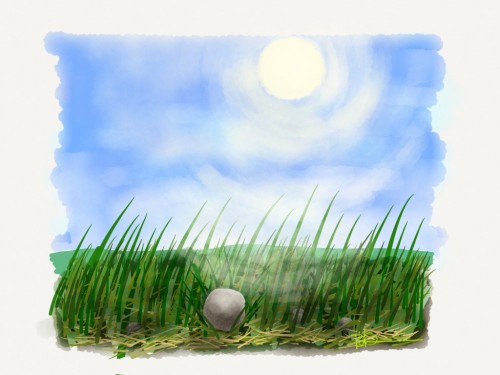This is a good, and important question that is seldom addressed in popular seed ball and seed bomb recipes. I thought that I’d put together some of my thoughts on the matter. When speaking of size, here, I mean the diameter of the seed ball, not the number of seeds. I discuss the number of seeds in each seed bomb here.
First, let’s look at the properties of the seed balls and what they provide for the seed.
Protection from the elements. A seed in a seed ball isn’t exposed to transport by most winds, or most surface run off. It should stay put. That gives us an idea of a minimum diameter: 1/4″ .
Stable Chemistry and microbiome. Seed balls will do this regardless of size, so this shouldn’t influence our conclusion.
Moisture retention. This is the most critical element of seed ball engineering. Both clay and organic matter, the primary elements in most seed balls are excellent at moisture retention. Good. One might think immediately, that a big seed ball would be better, since it has a lower surface area to volume ratio. Unfortunately, it isn’t that simple. Seed balls will stay moist longer in environments with higher humidity and less air circulation. Because clay and compost have sponge-like properties, they also have the capacity to wick moisture from other reservoirs. The biggest reservoir of moisture and humidity in a seed ball’s universe is the soil. A seed ball with good contact with that reservoir will stay moist longer, have better microbiota exchange, and an easier time rooting.
Back to the mechanics. Many online articles show adorable muddy children clutching fist-sized balls of compost and clay. When these are thrown, they will likely sit on top of thatch, or not come to rest with good contact with the soil. Kind of like the balancing boulders out in the US West. Without good contact with the soil, they will dry out quickly. A smaller seed ball is much more likely to have better contact with the soil, passing through thatch, or better yet being pressed in with a nudge from your shoe and therefore be able to wick moisture from the ground more effectively. In my assessment, there really aren’t advantages to the larger, US quarter, or even golf-ball sized seed balls. Making seed balls just shy of 1/2″ or sometimes smaller for tiny light-triggered seeds is a good balance. That’s just a nip smaller in diameter than a dime.
Dime-sized seed balls are big enough to provide the protection that a stratifying or germinating seed can benefit from, but not so much bulk that its a pain to transport a bunch, or that it hampers the seed ball’s ability to snuggle into a cozy place on the soils surface.
Advantages of smaller seed bombs:
- Cost less per seed ball
- Lighter
- You can make more
- You can carry more
- More discreet
- Have better soil contact
Advantages of larger seed bombs:
- Might impress folks who don’t know a lot about seed bombs






